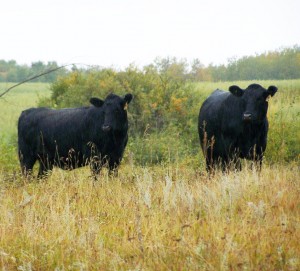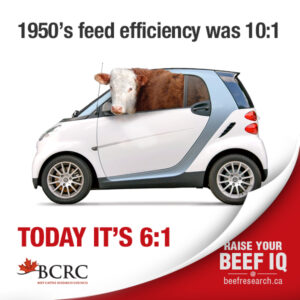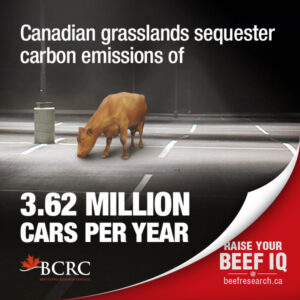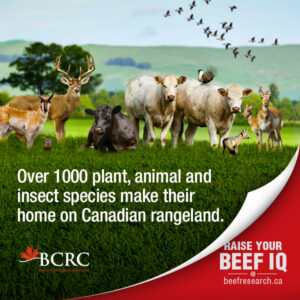Hot Air Doesn’t Just Come from Cattle
A week ago, Proceedings of the National Academy of Sciences published “Land, irrigation, water, greenhouse gas, and reactive nitrogen burdens of meat, eggs, and dairy production in the United States”.
The authors, a physicist from Bard College in New York, a physicist and a graduate student from Weizmann Institute of Science in Israel, and a Yale graduate student with a master’s degree in political science, looked at lifecycle assessments (LCA’s) for livestock. An LCA tries to estimate environmental impacts by looking at the inputs used (e.g. energy, feed, fertilizer, water, etc.) and outputs generated (e.g. greenhouse gases, smog, manure, fertilizer runoff, etc.) when meat, milk or eggs are produced, processed, transported, distributed, consumed, and recycled.
The authors of this study noted that regional variations in production systems and environments are important: “the results of an LCA conducted in Iowa, for example, are unlikely to represent Vermont or Colorado”. A key challenge, they said, “is obtaining defensible numerical values and uncertainty ranges for the tens if not hundreds of parameters needed in the calculations”, such as daily feed intake, feed:gain, and intake on pasture. Because these values vary with season, region, and technology use, “one research effort, focused on a single location, is unlikely to yield definitive results”, they noted.
What they did:
They took the results of an LCA conducted in Iowa (Comparative life cycle environmental impacts of three beef production strategies in the Upper Midwestern United States; Agric. Syst. 103:380-389), and extrapolated them to the rest of the US by incorporating USDA regional data on land and fertilizer use, feed production, irrigation practices and cattle numbers.
What they learned:
Beef have a larger environmental footprint than chickens or swine.

This isn’t news. Cattle are bigger than chickens and pigs, so it takes more feed to grow them. Cattle live longer than chickens and pigs, so they drink more water. Cattle are raised on less productive land than chickens, pigs or dairy cattle, so it takes more acres to raise beef cattle. Cattle consume more high fiber, less digestible forage than chickens or pigs, so they produce more greenhouse gases. The authors mention biodiversity, but suggest that there would be more biodiversity if cattle were gone. They are also concerned that cattle are sometimes raised in high rainfall areas. Perhaps they don’t understand that high rainfall areas can have steep hills, rocks and brushy areas that are not suited to crops, or pig, chicken or dairy barns.
The authors state that the results of this study could help to develop “corrective legislative measures”. Because of globalization, Americans’ dietary habits are rapidly adopted by “large and burgeoning economies as those of China and India”. Appropriately legislating American diets, they suggest, would help people in emerging economies make better eating decisions.
What it means:
This paper is flawed. After criticizing previous studies because “the results of an LCA conducted in Iowa, for example, are unlikely to represent Vermont or Colorado”, they extrapolated a single Iowa-based LCA to the entire US. After criticizing past LCA’s for being based on weak data, they did not gather or incorporate any new data into their own study.
Pardon me, but your bias is showing:
The authors referred to the FAO’s 2006 “Livestock Long Shadow” report, which stated that livestock are responsible for more greenhouse gas emissions than all of the world’s transportation combined. They neglected to mention “Clearing the Air” (Adv. Agron. 103:1-40), which clarified many of the oversights in “Livestock’s Long Shadow”. They also failed to mention the FAO’s more recent 2013 “Tackling Climate Change Through Livestock” which used a much more rigorous and sound methodology to assess livestock’s environmental impacts.
Proceedings of the National Academy of Sciences is a highly-respected scientific journal. Unfortunately, not all science is good science, and sometimes good journals publish bad science. Remember, it took 12 years for a leading medical journal (The Lancet) to retract a 1998 paper that suggested childhood measles/mumps/rubella vaccines were linked to autism. In the meantime, some well-meaning but misguided celebrities influenced a lot of concerned parents to not vaccinate their children.
Why you should care:
This paper doesn’t encourage barley- vs. corn-fed, or grain- vs. forage- or grass-finished, or conventional vs. hormone- and antibiotic-free production, or natural vs. organic, or animal-welfare approved, or local vs. commodity production systems. This paper encourages not eating beef, and suggests that governments should help design the world’s menus.
What we are doing:
Canada’s beef producers are constantly trying to reduce land, feed, energy and water use, improve range health and reduce nutrient and greenhouse gas losses. Improved production efficiencies often have environmental benefits.
Tim McAllister (AAFC Lethbridge) is leading a Beef Cluster project to measure how Canada’s beef industry’s feed, land, and water use, greenhouse gas production, carbon sequestration and biodiversity have changed since 1980, and identify ways to improve further.
The Canadian Roundtable for Sustainable Beef is developing a sustainability assessment. Like the Beef Quality Audit, this will be a scorecard that will identify where our industry is improving, and where we can still do better. The historical context from the Cluster project, plus the ongoing sustainability assessment will help the industry to better respond to consumer questions, concerns, interests and demands for sustainable beef.
Canada’s beef industry prefers that government policy and regulation be developed on the basis of sound science. The science Canada’s beef industry supports through the National Check-off and the Beef Science Cluster will help to provide factual, defensible information to inform policy decisions and consumer choices.
When it comes to environmental impacts, it’s not what you eat, it’s what you take but don’t eat. The single most meaningful diet-related action that all Canadian consumers can take for the environment is to reduce the amount of food they waste. A 2011 FAO study found that the average North American consumer wastes more than 115kg of food each year. In North America, nearly 25% of the cereal products (e.g. bread, pastas), 25% of fish products, 18% of the fruit and vegetable products, 15% of the root and tuber products (e.g. carrots, potatoes), 15% of dairy products, 8% of meat products, and 5% of oilseed products (e.g. vegetable oil, margarine) are lost due to consumer-level waste.
Eat your food before it goes moldy, sour, limp or ‘off’, eat a balanced diet, clean your plate, and enjoy your beef.
Learn more
- Environmental Footprint of Beef Production (BCRC Web page)
- Audio: Dr. Reynold Bergen’s view of the study published in PNAS – radio interview (8:28 minutes) Manitoba Farm Journal – Golden West Radio
Click here to subscribe to the BCRC Blog and receive email notifications when new content is posted.
The sharing or reprinting of this BCRC Blog article is welcome and encouraged. Please provide acknowledgement to the Beef Cattle Research Council, list the website address, www.BeefResearch.ca, and let us know you chose to share the article by emailing us at [email protected].
We welcome your questions, comments and suggestions. Contact us directly or generate public discussion by posting your thoughts below.


